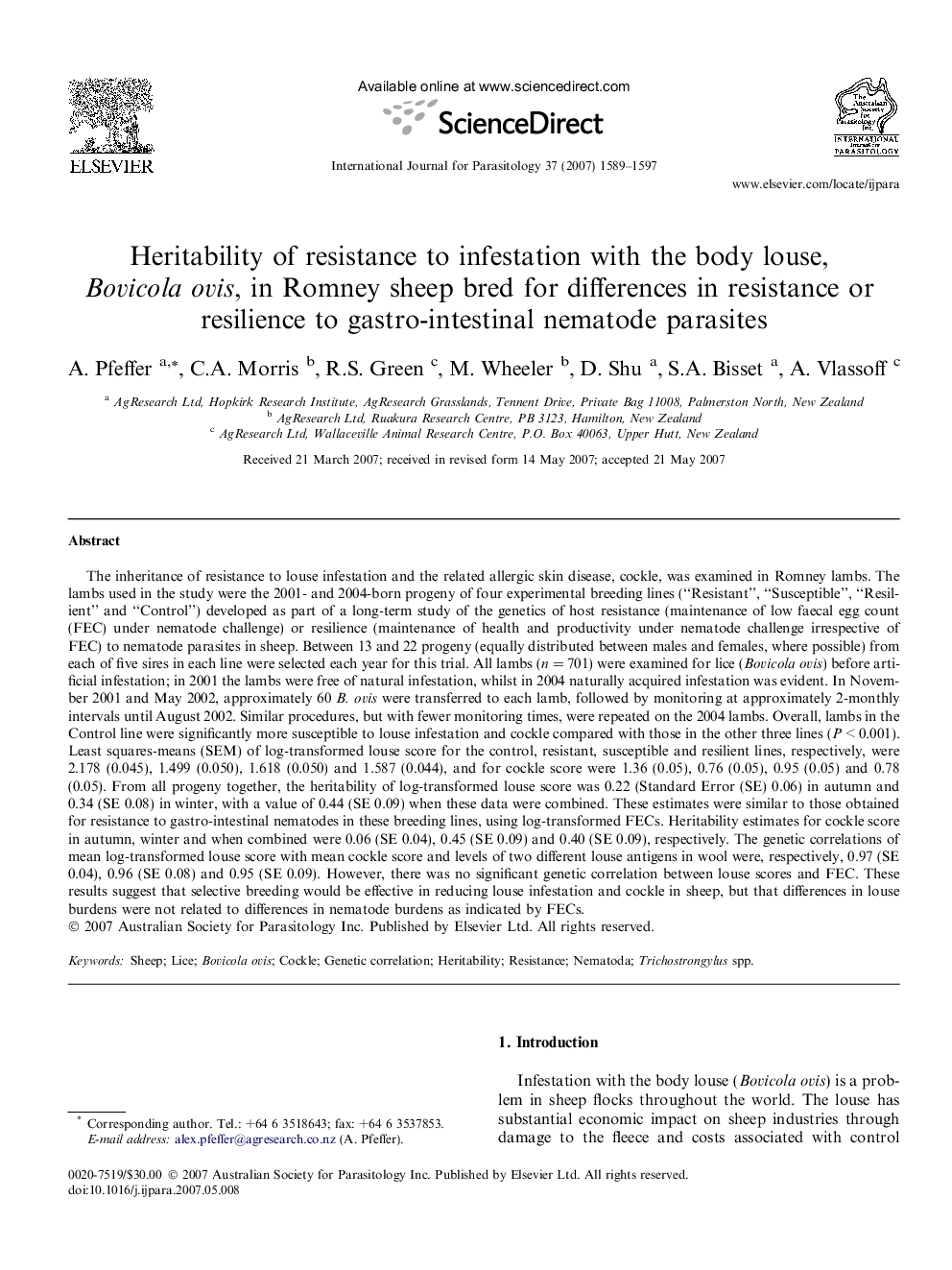| کد مقاله | کد نشریه | سال انتشار | مقاله انگلیسی | نسخه تمام متن |
|---|---|---|---|---|
| 2436646 | 1107336 | 2007 | 9 صفحه PDF | دانلود رایگان |

The inheritance of resistance to louse infestation and the related allergic skin disease, cockle, was examined in Romney lambs. The lambs used in the study were the 2001- and 2004-born progeny of four experimental breeding lines (“Resistant”, “Susceptible”, “Resilient” and “Control”) developed as part of a long-term study of the genetics of host resistance (maintenance of low faecal egg count (FEC) under nematode challenge) or resilience (maintenance of health and productivity under nematode challenge irrespective of FEC) to nematode parasites in sheep. Between 13 and 22 progeny (equally distributed between males and females, where possible) from each of five sires in each line were selected each year for this trial. All lambs (n = 701) were examined for lice (Bovicola ovis) before artificial infestation; in 2001 the lambs were free of natural infestation, whilst in 2004 naturally acquired infestation was evident. In November 2001 and May 2002, approximately 60 B. ovis were transferred to each lamb, followed by monitoring at approximately 2-monthly intervals until August 2002. Similar procedures, but with fewer monitoring times, were repeated on the 2004 lambs. Overall, lambs in the Control line were significantly more susceptible to louse infestation and cockle compared with those in the other three lines (P < 0.001). Least squares-means (SEM) of log-transformed louse score for the control, resistant, susceptible and resilient lines, respectively, were 2.178 (0.045), 1.499 (0.050), 1.618 (0.050) and 1.587 (0.044), and for cockle score were 1.36 (0.05), 0.76 (0.05), 0.95 (0.05) and 0.78 (0.05). From all progeny together, the heritability of log-transformed louse score was 0.22 (Standard Error (SE) 0.06) in autumn and 0.34 (SE 0.08) in winter, with a value of 0.44 (SE 0.09) when these data were combined. These estimates were similar to those obtained for resistance to gastro-intestinal nematodes in these breeding lines, using log-transformed FECs. Heritability estimates for cockle score in autumn, winter and when combined were 0.06 (SE 0.04), 0.45 (SE 0.09) and 0.40 (SE 0.09), respectively. The genetic correlations of mean log-transformed louse score with mean cockle score and levels of two different louse antigens in wool were, respectively, 0.97 (SE 0.04), 0.96 (SE 0.08) and 0.95 (SE 0.09). However, there was no significant genetic correlation between louse scores and FEC. These results suggest that selective breeding would be effective in reducing louse infestation and cockle in sheep, but that differences in louse burdens were not related to differences in nematode burdens as indicated by FECs.
Journal: International Journal for Parasitology - Volume 37, Issue 14, December 2007, Pages 1589–1597